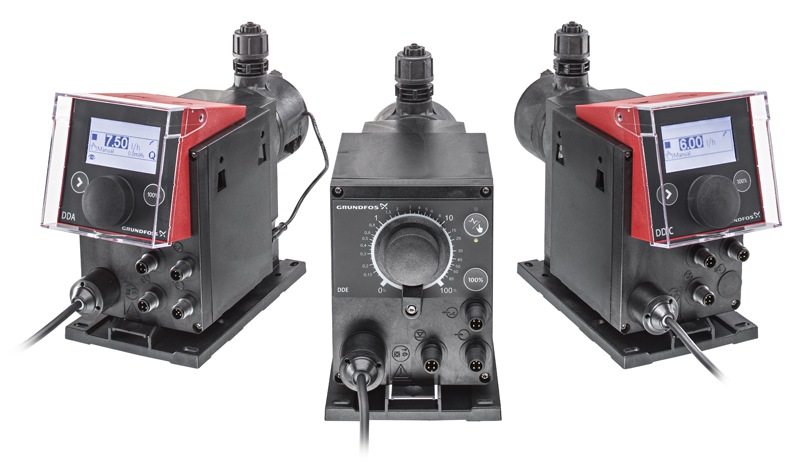Grundfos, one of the global leaders in advanced pump solutions, has been able to create a unique mark in the water industry. One of its advanced products range includes the chemical dosing pumps. Grundfos’ solutions help to determine the number of chemicals injected into each process and provide the right-size of the dosing pump for any system to make sure the best performance and precision is achieved in a textile industry. Digital dosing pumps are also used by various other industries like food, manufacturing facilities, medical laboratories and mining operations.

Grundfos, one of the global leaders in advanced pump solutions, has been able to create a unique mark in the water industry. One of its advanced products range includes the chemical dosing pumps. Grundfos’ solutions help to determine the number of chemicals injected into each process and provide the right-size of the dosing pump for any system to make sure the best performance and precision is achieved in a textile industry. Digital dosing pumps are also used by various other industries like food, manufacturing facilities, medical laboratories and mining operations.
The dyeing applications in the textile industry have come a long way from the manual addition of dyes to mechanised dosing. With industry 4.0 revolutionizing the way industries operate, dosing of chemicals has also become smarter. The transition from a silo system of dosing chemicals to automation has meant that these operations can be controlled remotely by software such as Building Management System (BMS).
The challenges associated with chemical dosing are no longer just a technical problem, having different number of proprietary chemicals in the market combined with the changes in the organisational set up demands multiple departments like planning & procurement, logistics & inventory management, plant operations and other to converge in order to optimize the chemical demand in the respective processes.
In the textile dyeing application, Hydrogen Peroxide (H2O2) is a commonly used bleaching agent. Assessments were conducted by Grundfos in a towel manufacturing industry in southern Tamil Nadu, India that uses H2O2 as bleaching agent. The entire process was a manual setup, in an attempt to automate the process, few interesting observations were made:
• Due to manual handling, chemicals were lost in some batches that also led to spillage and other issues
• Visible differences in the quality of towels that received less quantity of chemical during bleaching
• Chemical stored in abundance led to high inventory cost
Some of the key issues are the nature of the chemicals used in dyeing applications and their unregulated quantities. Precise and accurate dosage of chemicals ensures proper dyeing while reducing costs and simultaneously increasing the overall productivity.
Textile units currently no longer need a single product, but rather needs holistic solutions to address the problems while continuously improving the process. In the chemical dosing context, the offered values are perceived differently by end users (plant operators), influencers (consultants) and the actual purchaser (purchase department). The end user requires a system that is robust with minimal downtime, the actual purchaser seeks best quality at best price and the influencer derives value in the overall performance of the system. Hence, the challenge in selecting the right dosing pump becomes multi-dimensional.
The rotating components of the mechanical device is subjected to constant wear and tear and dosing pumps are no exceptions. Over a period, the error percentage or tolerance of the pump widens and results in dosing quantity variation. This takes away the process control and results in higher chemical consumption. The purchase decision based on price very often overlooks the lifecycle cost of a dosing pump. Dosing pumps, if rightly selected not only bring down the operating cost but also increase the productivity of the process. The primary function of a dosing pump is to transfer precise dosing medium (chemicals, syrups etc). Grundfos’ smart digital dosing pumps use the stepper motor – the lynchpin ensures the accuracy of dosing.
In an automated-process environment, the ability of individual devices to interact with other devices and the potential to generate and capture data are paramount. The real time data allows businesses to analyse and register continuous improvement in the entire process. Grundfos’ smart digital pumps enhance operational efficiency not only in an automated environment but can simulate an automated process even when operating in silos. The Grundfos DID controller can also be coupled with the pumps when multiple chemicals / dyes are used in a process – this can help synchronise the pumps. Grundfos SMART Digital dosing solutions have heralded a new era of intelligent chemical dosing. The cutting-edge drive technology, new dimensions of end-user comfort and intelligent flow control help in improving cost efficiencies while continuing to support any high precision processes.